Research team: Sakuma, Ikari, Tazawa, Sakamoto, Ikekame, Suzuki, Yamamoto
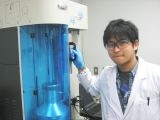
|
We have succeeded in making fine activated carbon with particle diameters of less than 1 μm,
which is much finer than that previously considered possible.
While using this ultrafine activated carbon (super-powdered activated carbon: S-PAC)
as a pretreatment step prior to microfiltration (MF)
to greatly improve the adsorption removal efficiency for natural organic matters (NOMs)
that are precursors for disinfection byproducts, earthy-musty odor compounds in tap water
such as geosmin and 2-MIB, and viruses,
we will also attempt the reductive decomposition of chloramines (organic/inorganic)
that cause a chlorine odor in tap water. Research team: Sakuma, Ikari, Tazawa, Sakamoto, Ikekame, Suzuki, Yamamoto |
 |
|
The water quality standard in Japan for aluminum, for which there are concerns regarding health effects,
is set at less than 0.2 mg/L. Aluminum is a constituent element of clay minerals,
so trace amounts can be found in river water.
However, when aluminum-based coagulants are used for drinking water treatment,
almost all of the residual aluminum in the tap water comes to be derived from the coagulant.
In this research, we propose the use of a novel coagulant (i.e., high basicity polyaluminum chloride)
and a ceramic MF membrane as a method for reducing the level of residual aluminum in tap water.
In addition, we carry out continuous water flow tests by using a mini-plant set up
in an actual drining water treatment plant
with the goal of optimizing the operational parameters such as the coagulant injection rate.
We also aim to use the new coagulant to establish an effective removal method
for viruses and arsenic/boron and to elucidate the removal mechanism. Research team: Kimura, Kondo, Takahashi, Nakagawa, Saito |
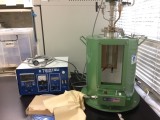 |
|
Removal of earthy-musty odor compounds produced by cyanobacteria remains to a major issue at many water supply utilities.
In addition, 1,4-dioxane, which is widely used as an organic solvent, is suspected of being carcinogenic;
moreover, it is difficult to remove using conventional water treatment.
This substance, which is especially detected in groundwater, is causing trouble for water supply utilities.
In this research, we will attempt to use an advanced oxidation process (AOP)
that employs ultraviolet light/photocatalyst/hydrogen peroxide to break down these substances. Research team: Ishikawa, Kozumi |
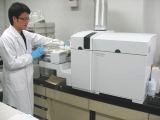 |
|
Norovirus is believed to be the main offender of the winter "stomach flu."
Norovirus, which causes infectious gastroenteritis with accompanying diarrhea,
is said to be resistant to chlorine sterilization.
Furthermore, on account of the difficulty of experiments,
there are almost no data regarding detailed norovirus removal parameters in the water treatment process.
In this research, for the first time in the world,
we experimentally investigate the removal of noroviruses during drinking water treatment
by using human norovirus virus-like particles expressed through genetic recombination techniques. Research team: Marubayashi, Murai |
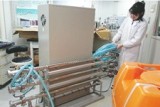 |
|
In recent years, the existence of various pharmaceutical residues in rivers has come to light.
Because these pharmaceuticals are highly hydrophilic, they are difficult to remove using coagulation or activated carbon.
For this reason, we may become reliant on oxidation treatments such as those with chlorine or ozone.
Although pharmaceuticals can certainly be broken down through such oxidation treatments,
it is also true that various products result from such decomposition.
In this research, we experimentally investigate the toxicities of these products
and verify whether oxidation is "truly" safe. Research: Hashizuka |
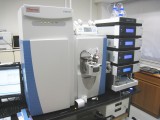 |
|
On the basis of research investigations to date,
when considering average ingestion from tap water and food,
we have found that some water quality standards for metals tend to be overly stringent.
This trend was referenced in the 2008 revision of the WHO guidelines for drinking-water quality:
the initial intake allotted to drinking water out of the total amount of oral ingestion (water and food) was increased from 10% to 20%.
However, considered from the standpoint of health risk management,
the amount of intake should not be discussed solely in terms of an average value.
Rather, it must be discussed in terms of a probabilistic distribution.
This research focuses on the oral ingestion of metals, with distributions compiled on the basis of a Monte Carlo simulation.
A comparative consideration of toxicity and exposure is conducted. Research: Kido |
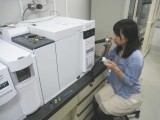 |
|
The Agricultural Chemicals Control Act requires the toxicity of agricultural chemicals
as well as intermediate products that form in the environment to be investigated at the time of registration:
only products judged to be safe can be registered as agricultural chemicals.
However, when these substances contaminate raw water of tap water,
it has been found that mutagenicity may be expressed if they react with chlorine,
which is always used for disinfection in the final water treatment step.
In this research, we address three core issues: "which intermediate products show toxicity after chlorine treatment,"
"to what extent do such intermediate products exist in the environment," and
"whether such intermediate products can be removed in the drinking water treatment process."
Thus, we will attempt to show "a review of the Agricultural Chemicals Control Act
while taking into consideration chlorine treatment." Research team: Honda, Kuriyama |
 |